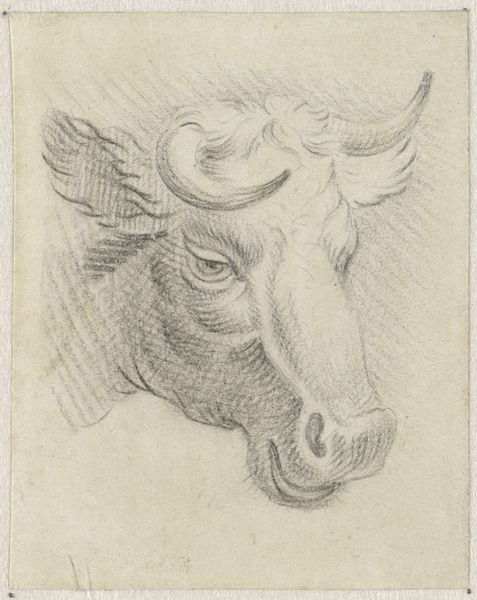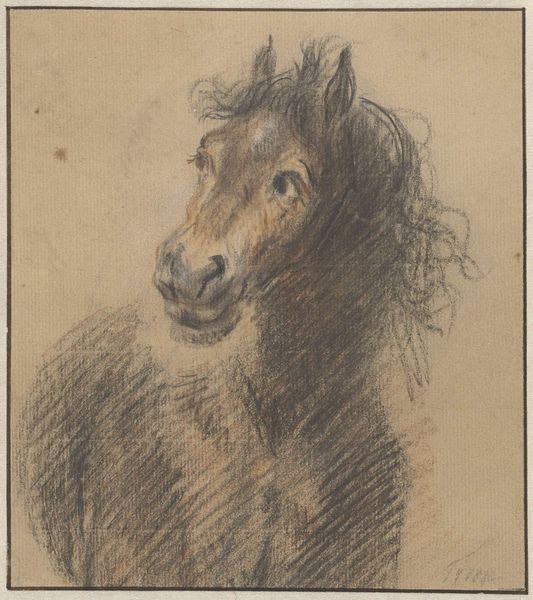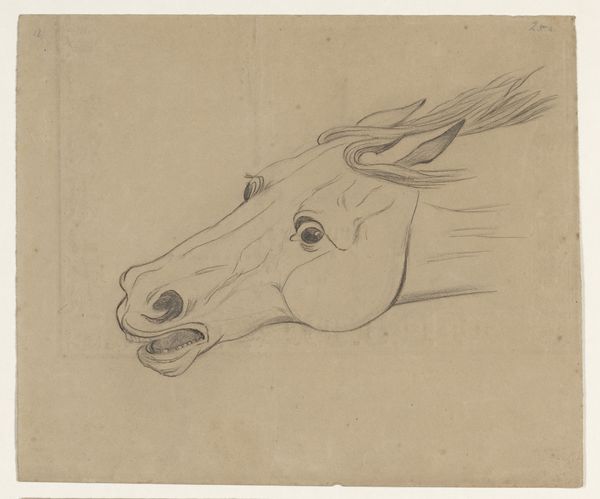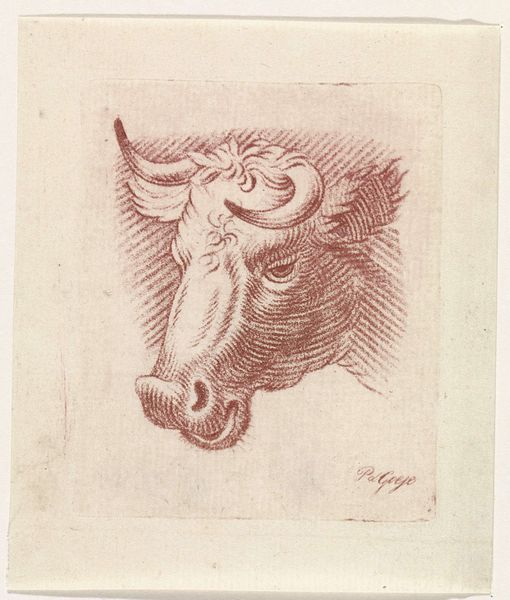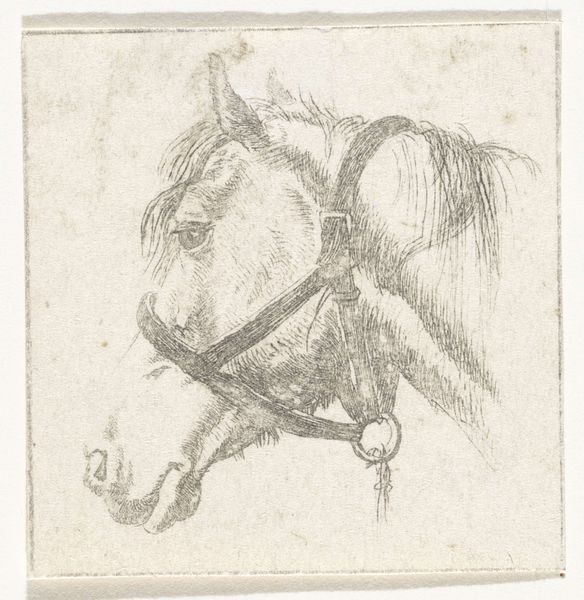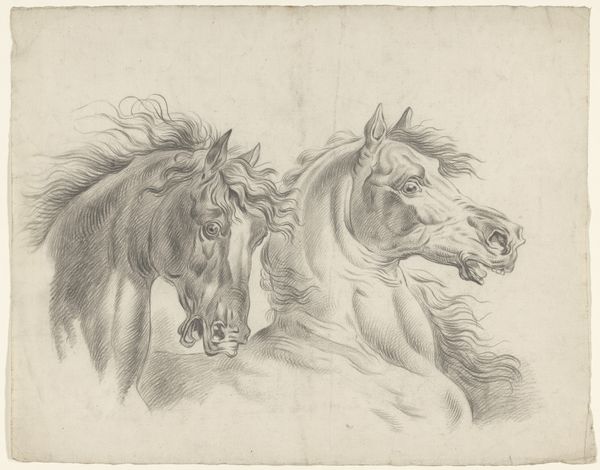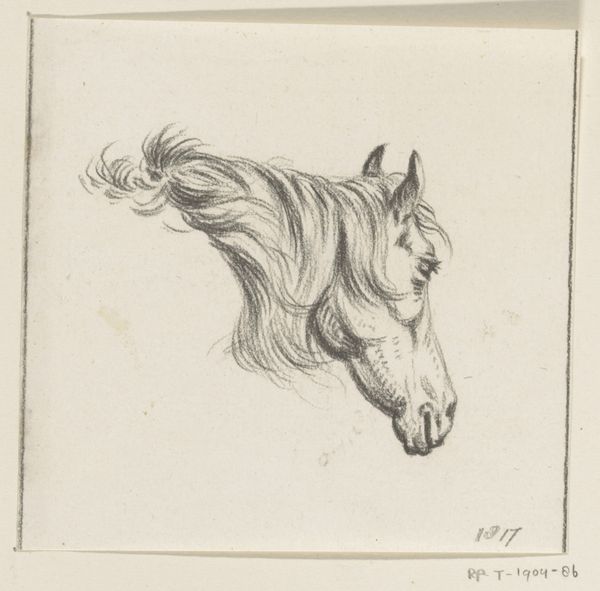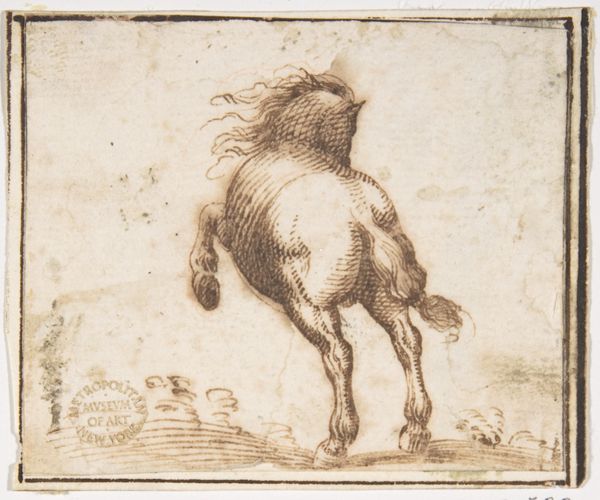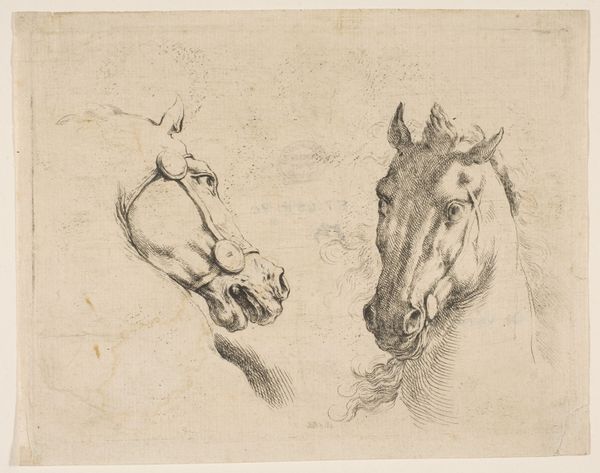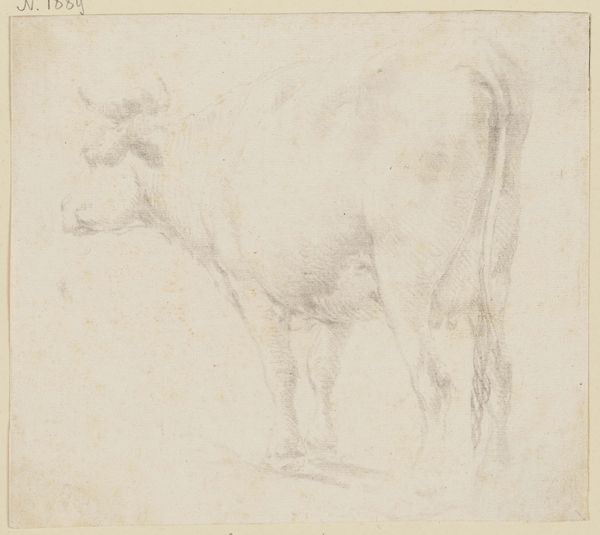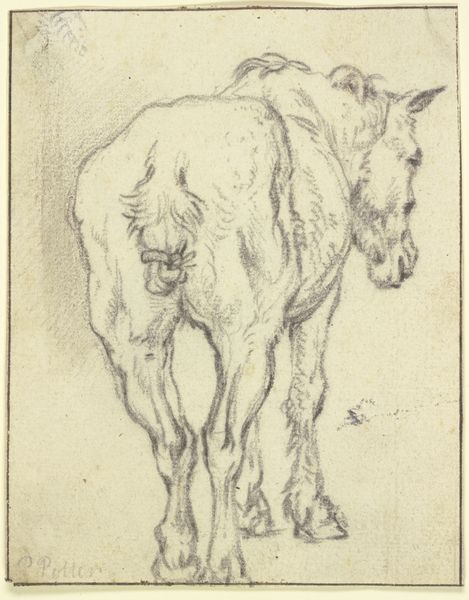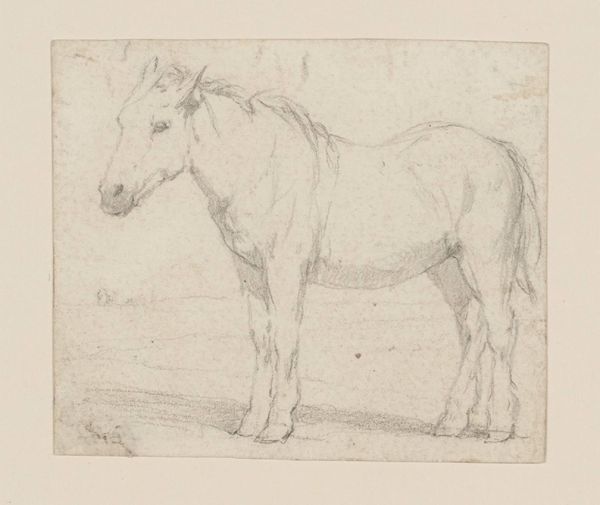
drawing, print, pencil
#
portrait
#
drawing
# print
#
pencil drawing
#
pencil
#
italian-renaissance
Dimensions: sheet: 5 13/16 x 6 3/4 in. (14.7 x 17.1 cm)
Copyright: Public Domain
Curator: Immediately, I'm struck by the fluidity of line and the textural density achieved with just pencil—there's such volume! Editor: We are looking at “Head of a Horse,” a pencil drawing from the Italian Renaissance period, likely made between 1525 and 1575 by an anonymous artist. It is currently held at the Metropolitan Museum of Art. Let's dig into it, shall we? For me, what's intriguing is the potential link between this artwork and the socioeconomic structures that supported its production. We might consider what class of artist could gain access to such fine pencils during this era. Curator: But isn't that leaping ahead? Let's look at the form! See how the artist masterfully suggests depth and muscle with layers of cross-hatching? The texture is incredibly vibrant, mimicking the dynamism of the animal's mane. Editor: Absolutely, but how did such vibrant artistic choices function? It's possible the material quality, and cost, of pencils could have influenced a demand dynamic or restricted availability during that time, potentially framing access to artistic careers and consumption for specific people. We might imagine how these economic and professional dimensions impact art style too. Curator: It's captivating how light interacts across the horse's brow, the subtle use of chiaroscuro emphasizing the intelligence in its eye. Editor: And were such scenes readily accessible? Is it, potentially, an objectification of animal labor that needs further unpacking? This all leads us to the larger questions surrounding representation, agency, and consumption. Curator: Perhaps. I think the artwork's enduring appeal stems from its classical structure—the idealized beauty of the horse echoes classical sculpture, a hallmark of Renaissance aesthetics. It brings us to an understanding of perfection of beauty itself. Editor: Which raises questions about standards of the time, class bias, power dynamics involved, and if and how an idealized form obscures historical realities by encouraging people to consume only representations of wealth or status, rather than to produce authentic reflections on the diversity of historical experiences. Curator: Ultimately, this close study reminds me how artists, even within constraints, pursue formal perfection. Editor: For me, thinking about socioeconomic forces reveals artistic production as a nuanced interplay of factors rather than just subjective choices. Let’s move on!
Comments
No comments
Be the first to comment and join the conversation on the ultimate creative platform.
